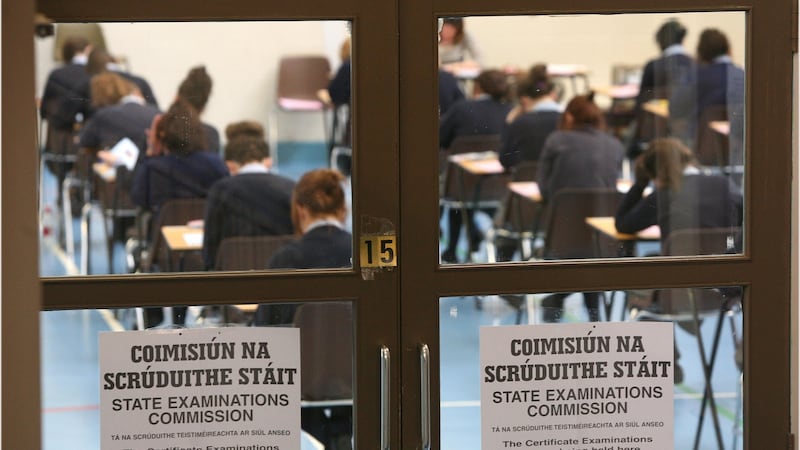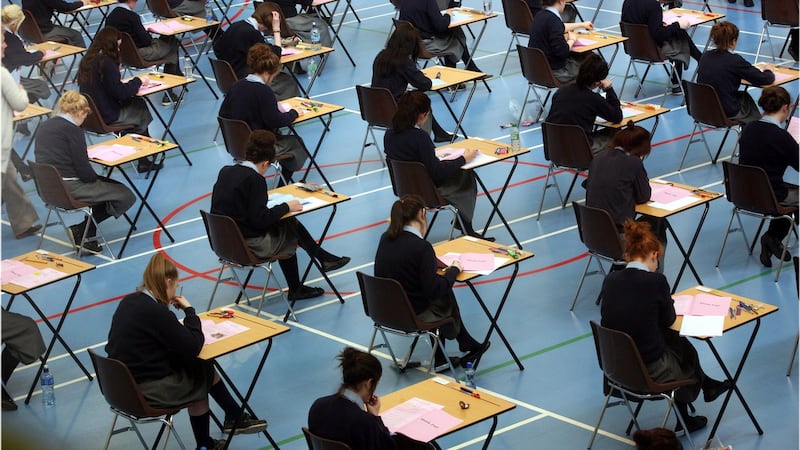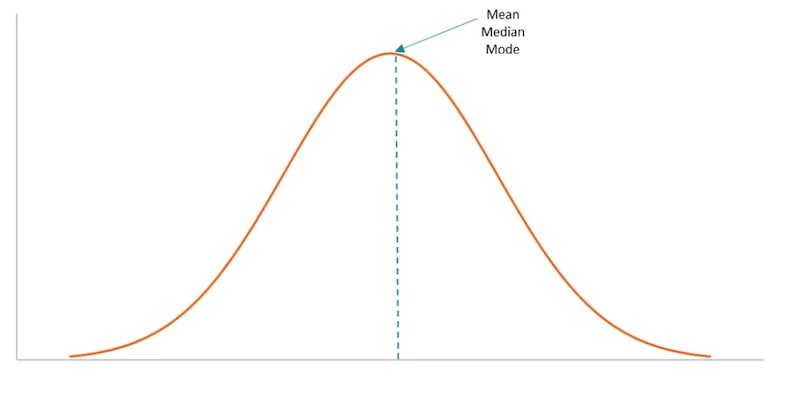* More than 100,000 students have completed day five of the State exams
* Leaving Cert: There was relief with a “very manageable” Irish paper 2 following yesterday’s tougher paper (9.30-12.35pm); there was “no shock or upset” in a warmly-received biology exam(2-5pm)
* Junior Cycle: Graphics (9.30-11am) and French (1.30-3.30pm)
So, day five of the State exams is over - and it’s one day closer to the finish line
If the stress is getting to you, Peter McGuire has asked experts for advice on the best way to manage your anxiety. You can read it here.
“Testing is not a natural state,” Dr Jennifer Symonds, associate professor of education at the UCD, tells him. “It is an artificial condition that we have created that has negative impacts on many people’s mental health.”
The advice?
Stay away from the phone. Try to avoid marathon study sessions. Take time to relax. Find a routine that works. Talk to someone if you need help.
We hope you find it of help.
Up tomorrow for Leaving Certs, meanwhile, is French (9.30-12.50pm) and biology (2-5pm).
For Junior Certs, it’s home economics (9.30-11am) and Spanish (1.30-3.30pm)
Best wishes to everyone!
Leaving Cert diary: ‘Was it the best idea to go to see the Harry Styles concert between exams? Possibly not’
Our exam diarist Caithlin Balfe is a huge Harry Styles fan.
She wondered - briefly - about whether it was a good idea to go in the middle of her Leaving Cert exams.
As it turns out, it did her the world of good.
“I had already done quite a lot of study so this breathed life back into me, and screaming at the top of your lungs for a few hours in the middle of a huge crowd reduced a lot of stress.”
You can read her full diary here.

First look: Junior Cycle French exam
Students sat the common level Junior Cycle French paper which covered everything from women’s football to acting and exotic voyages.
You can check out the paper here:
Leaving Cert biology: No shocks, no surprises - but skeleton question spooks some
Peter McGuire has filed a detailed teacher reaction piece here.
The consensus from teachers is that there was plenty of choice which allowed students to navigate their way around tricker topics.
There was, however, some confusion over a short question - question three - on skeletons which used an unfamiliar word: “innominate”.
Margaret McGagh, a biology teacher at Dunmore Community School in Co Galway and ASTI subject representative, has solved the mystery:
“Innominate bones are pelvic bones, but innominate is not a word we have come across and I don’t believe it is one that is on the syllabus,” she said.

First look: Leaving Cert biology papers, higher and ordinary
You can check out today’s Leaving Cert biology papers, below.
Overall, teachers have described it as “very fair with very few surprises” and enough choice to allow students to play to their strengths.
- Leaving Cert biology (higher level), sections A&B
-Leaving Cert biology (higher level), section C
- Leaving Cert biology (ordinary level), sections A&B
- Leaving Cert biology (ordinary level), section C
‘No shocks, no upsets”: Leaving Cert biology (higher)
This evening’s Leaving Cert biology paper (higher) was “very fair with very few surprises”, says Wesley Hammond, a biology teacher with the Institute of Education.
Students familiar with the past papers will be delighted, he said, while the paper offered plenty of choice to allow students play to their strengths.
“Thanks to the ample choice afforded, students would have been able to answer a full paper while avoiding less popular topics completely,” he said.
“There was great clarity within many questions, both in terms of phrasing and focus, as there was minimal mixing of topics.”
Those who put in the effort to get a thorough grasp of every part of the topics will have found the paper a “fantastic opportunity to prove that to the examiner”.
“There were of course trickier questions, but those who took the time to read through the paper will have been able to navigate them,” he said.
Some questions, however, did have a sting in their tail, particularly in the latter part of the paper.
“Section C had many moments that tested the finer details of topics in a way that would really distinguish the H1/H2 students. For example, the ecology question’s demand on the nitrogen and carbon cycles will have turned off many who may have previously expected to do that question,” he said.
“Other questions were rather verbose or wordy in a way that would likely be off putting for a weaker student. However, on careful reading, these sections were very manageable if you gave yourself the moment of composure.”
While much of this paper was anticipated, he said there were a few surprises – both positive and negative.
The debut appearance of a question on the function of apparatus for surveying animals in Section B might have given students pause.
On the other hand those who studied reproduction (both human and plant), which makes up only two chapters of course, will find that they could answer 30 per cent of the paper.
“Ultimately, this was a very student-friendly paper. Some students will have noticed an almost word-for-word reiteration of previous exam questions. The frequent use of diagrams and graphs will have helped students visualise the question in a way that makes them less abstract and more accessible. While in places it was a little tougher than last year, a prepared student will have met a paper that posed no shocks or upsets,” he said.
Oliver Callan: ‘I got through last two days of the Leaving on painkillers and no sleep’
We’ve been asking public figures recently about their Leaving Cert memories.
Holly Cairns, Diarmaid Ferriter and Joe Duffy recently obliged.
It’s striking how vivid people’s memories are ... PTSD will do that to you, I suppose.
Oliver Callan, who spoke to us back in 2019, had a particularly memorable end to the exams. You can read the full piece here.
During the weekend in between exams, a few cattle “broke out” into a neighbour’s field. It was Sunday night, dusk, and I was summoned to help the rescue mission. Running across boggy ground, I went down, twisting my knee in a hole and tearing my cruciate ligament. My father had to carry me back across the field. Dosed on painkillers and with no sleep, I managed to get through the last two days of exams with my leg up on a chair. I felt very Joan of Arc about the sacrifice for the cause of agriculture.

State exams number of the day:
520
-The number of Junior Cycle students due to sit the Italian paper today.
It is not the smallest exam of them all, however. At Leaving Cert level, Danish has the fewest candidates (10), followed by Modern Greek (11), Ancient Greek (14), Swedish and Czech (both 16).
Since you asked, the biggest Leaving Cert exam is maths (59,166), followed by English (58,978), Irish (51,032) and biology (35,715).
Peter McGuire has filed a detailed teacher reaction piece following the higher and ordinary level Irish paper 2, as well as PDFs of the exam papers.
You can read it here.

‘Many students will have left exam halls smiling’: More reaction to Irish paper 2 (higher level)
Students will have breathed a sigh of relief rather than frustration as they opened this paper, according to Claire Grealy, an Irish teacher at the Institute of Education.
“It was what students would have anticipated and prepared for,” she said. “The questions were clear, accessible, and fair a clear contrast to yesterday’s paper 1.”
She said the two léamhthuiscint (reading comprehension) texts were clear and concise.
“The pieces on explorer Tom Crean and the European Year of the Youth would have posed no great challenge to the students. The grammar questions followed the format of previous years and thus would have been very familiar to those who had revised previous papers,” she said.
In addition, question 2′s prose would have been a “huge relief” to students.
“Dís was much anticipated and thus many students will have been glad of the chance to get the reward for their work. The Oisín i dTír na nÓg question was a rather specific and narrow in its focus, wanting two traits of the character rather than of the genre.
“But this was clearly indicated in a well-expressed question that didn’t try to artificially hinder or challenge the student’s comprehension of the task,” she said.
The poetry was also as expected and continued the trend in recent papers of asking students for personal responses to the material.
“This got them to think on their feet and express their own emotional reactions to the poetry. This type of question has been very consistent in recent years and so this request will have been foreseen, ensuring that students would always have a fair chance to shine,” she said.
The main question on “An Spailpín Fánach” was nearly identical to those from 2014 and 2021, so she anyone who had worked on sample answers will again find their work recompensed.
“For question 4, most schools study An Triail and this was simply a great question on the negative impact of characters. This is familiar territory to anyone studying the play and so I am sure many students will leave the exam hall smiling.”
Dánta Breise – A Chlann was another widely anticipated text and, again, its questions were “brilliantly straightforward”, she said.
“This was a really great paper that did what a good exam should do – reward those who had put in the time and effort to learn the material. It had no needless obscurities, focusing instead on the more student-friendly approach of letting them show just how well they had engaged with the texts. This was a deeply fair paper; I think many students will leave the halls smiling.
Lego: not just child’s play
Today’s Junior Cycle graphics paper is out.
Any Lego-obsessed students will have been delighted given the focus on Lego block arrangement and elevation.
Full paper:
What is the bell curve?
We’ve had a few queries from students about what happens to their exam scripts once they are handed over – prompted by difficulties many faced in Friday’s Leaving Cert paper 2.
So, what it is?
The name is derived from the bell-shaped curve on a graph (see below) which plots out the distribution of grades achieved by students.
Every year the State Examinations Commission (SEC) seeks to ensure a similar proportion of students achieve the same grades across individual subjects.

Why? It is aimed at ensuring standards are maintained each year.
Using a similar pattern, examiners adjust marking schemes at an early stage in the marking process to ensure a similar proportion of students will secure H1s, H2s and H3, etc, year after year.
This can involve giving or taking away marks for individual questions if they were “too hard” or “too easy”, based on a sample of scripts being marked.
So, what do the final results look like? Take the Leaving Cert exam in higher level maths last year.
This are the proportion of students who achieved the following grades in 2022:
H1 (18 per cent); H2 (19 per cent); H3 (24 per cent); H4 (22 per cent); H5 (14 per cent); H6 (5 per cent); H7 (0.9 per cent); H8 (0.2 per cent).
There was a similar pattern in 2021:
H1 (15 per cent); H2 (18 per cent); H3 (21 per cent); H4 (20 per cent); H5 (16 per cent); H6 (8 per cent); H7 (2 per cent); H8 (1 per cent).
So, try not to worry – all past indicators are that there will not be sudden spike in people “failing” the exam. In addition, the State Examinations Commission has said it will
‘Well received’: Leaving Cert Irish paper 2 (ordinary level)
There has also been a positive reception to the ordinary level Irish paper 2
Linda Dolan, Irish teacher at Mercy College, Sligo, and Studyclix subject expert, said.
“The paper was topical with rugby and the Ukrainian war appearing in the comprehension element. The much preferred poem Géibheann came up in the Filíocht section with An t-Earrach Thiar being the other option.
“The three choices in the Prós section contained no grey areas and students with a good understanding of the literature would have been able to give it a great shot. Overall a very straightforward, student centred exam today.”
‘Very manageable’: Leaving Cert Irish paper 2 (higher)
The early verdict from teachers is that Irish paper 2 was much more approachable than yesterday’s paper.
Studyclix subject expert Linda Dolan, Irish teacher at Mercy College, Sligo, said it was a “very manageable” higher level paper.
“They would have welcomed the highly anticipated literature questions. Oisín i dTír na nÓg and Dís appeared in the Prós section, which may have been predicted, with both containing straightforward questions,” she said.
“However, An Spailpín Fánach in the Filíocht section contained some tricky vocabulary and would have put students through their paces. No doubt Mo Ghrá-sa was the most popular option as the language was much more student friendly.
“Although the topics for the léamhthuiscint appeared difficult, the questions presented nothing out of the ordinary. Students would have been relieved with today’s paper after possibly being left disheartened after yesterday’s exam.”

















